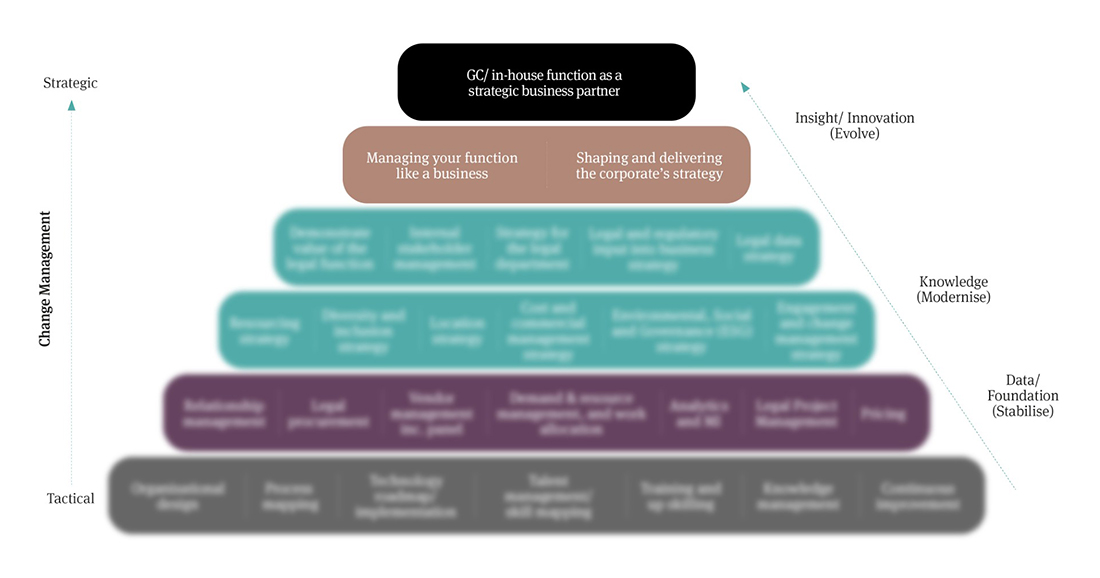So what next?

We started by discussing what it means to be a Strategic Business Partner, and, after working through the rest of the Pyramid, here we are.
Once the right building blocks are in place from a foundational, structural and strategic perspective, you should have the right people, process, data and technology to position yourself as a strategic partner to the business. At this stage, it is about how you bring these components together.
What does that look like in practice?
As we discussed at the outset of this article, Managing the function like a business involves offering the maximum value to the organisation at the most effective cost. By putting in place the building blocks of the Pyramid, you should have achieved this through, for example:
- Outsourcing low-risk, low-value legal work to an alternative legal services provider to maintain the work at a lower cost.
- Freeing up time within the legal function which now allows your lawyers to get involved earlier in conversations with the business, providing more strategic, proactive advice.
- Leveraging internally available technology to improve the matter intake process, providing better visibility to the business, whilst avoiding the additional costs of purchasing a point solution.
The second element, Shaping and delivering the corporate’s strategy, should be achieved through the process of implementing the strategic building blocks in the third layer of the Pyramid. Examples of how this might work in practice might include:
- Setting out a clear risk appetite and supporting Framework for your lawyers, aligned with the organisation’s desire to grow quickly at the cost of taking on extra risk.
- Aligning with the organisation’s strategy to grow market share as a priority, setting up the department in a way that focuses on delivering new business contracts as quickly as possible whilst deprioritising contract renewals.
- Shifting to a ‘hub and spoke’ organisational structure to respond to the organisation’s desire to more closely integrate back-office functions into front-office teams.
By ensuring you are collecting data on your workload, and mapping progress against your various strategies, you should be able to pull that information together to tell a story articulating the value of your function.
Key Takeaway: These building blocks should naturally come together in the process of delivering the first three tiers of the Pyramid. By ensuring you are properly collecting data, tracking progress, and building a story that can be presented to management, you will be able to position yourself as a true strategic business partner.
Conclusion
It is important to note that whilst the Pyramid offers a comprehensive summary of the key legal operations components for an in-house function, it is not a linear path. Everybody's journey is unique, and there is no one correct path or speed.
The Pyramid is instead a guide to building your capabilities and depending on the nature and maturity of your legal function (and organisation as a whole), you should spend time identifying which blocks are most relevant to you, which you are already strong in, and which you might need to improve.
It is also not possible to complete the Pyramid. Regardless of how many components you have delivered upon, there will always be room to refine and improve your approach. Continuous improvement is, after all, a core principle of sophisticated legal operations.
To get you on your way [to the top table], why not take the Legal Operations Health Check and prioritisation roadmap. It will provide you with an understanding of where your legal department is now across 10 key dimensions, and map the path to success by identifying opportunities for improvement.


